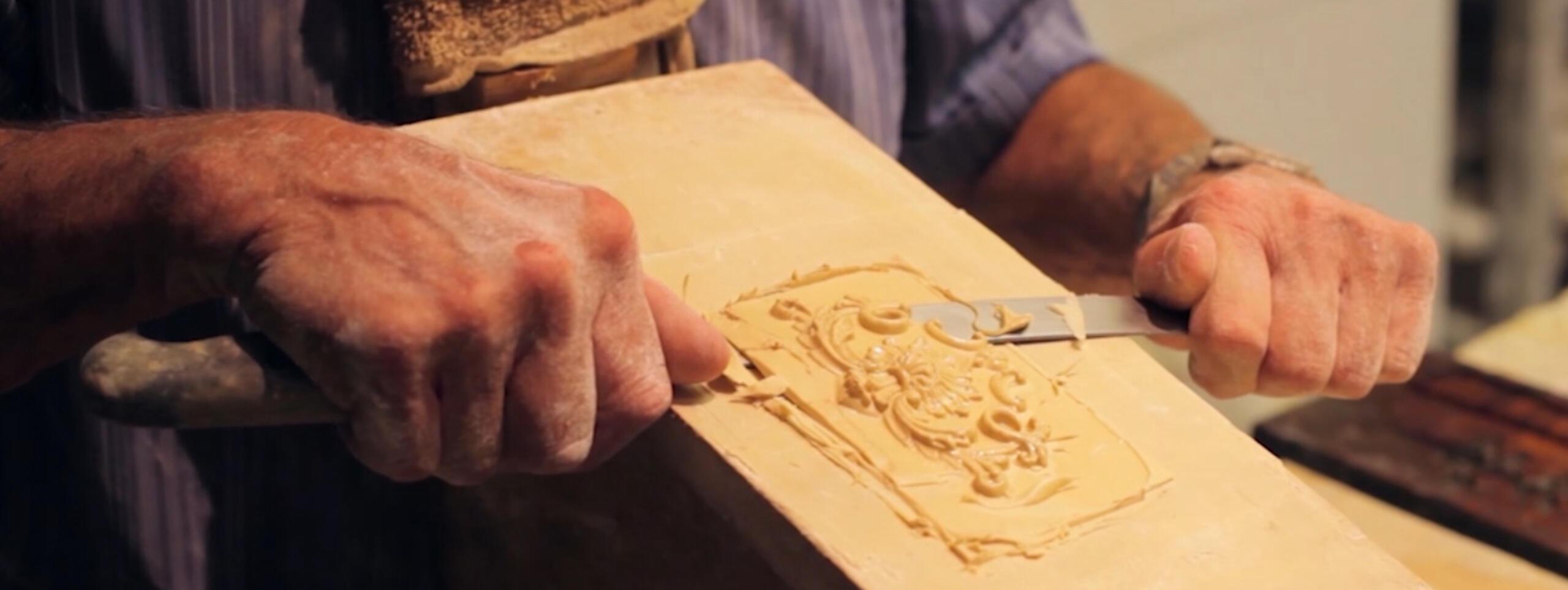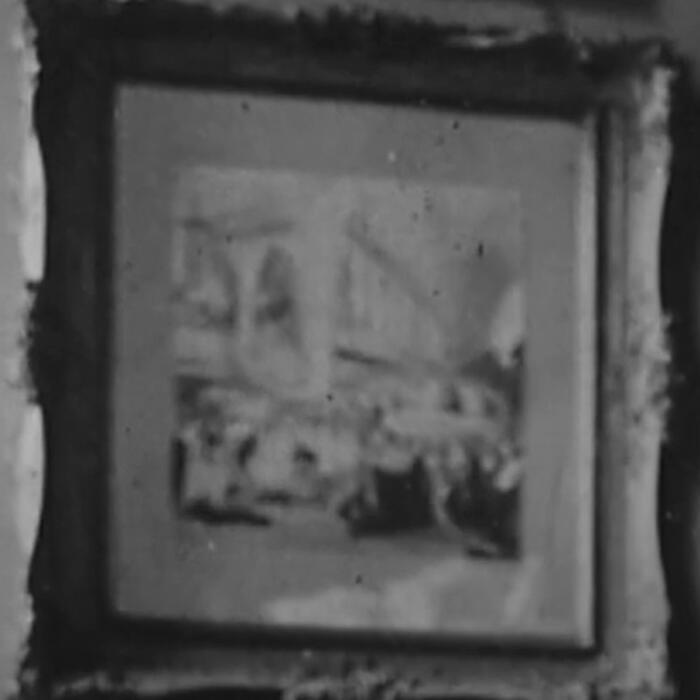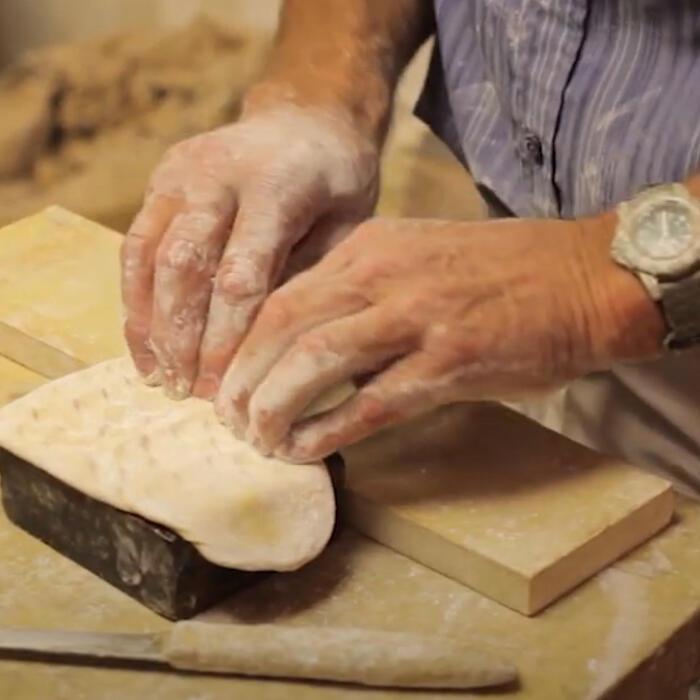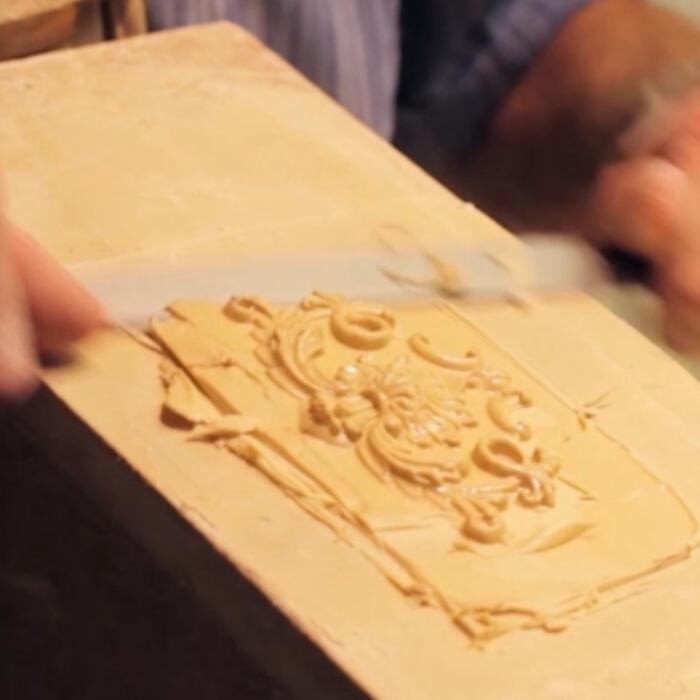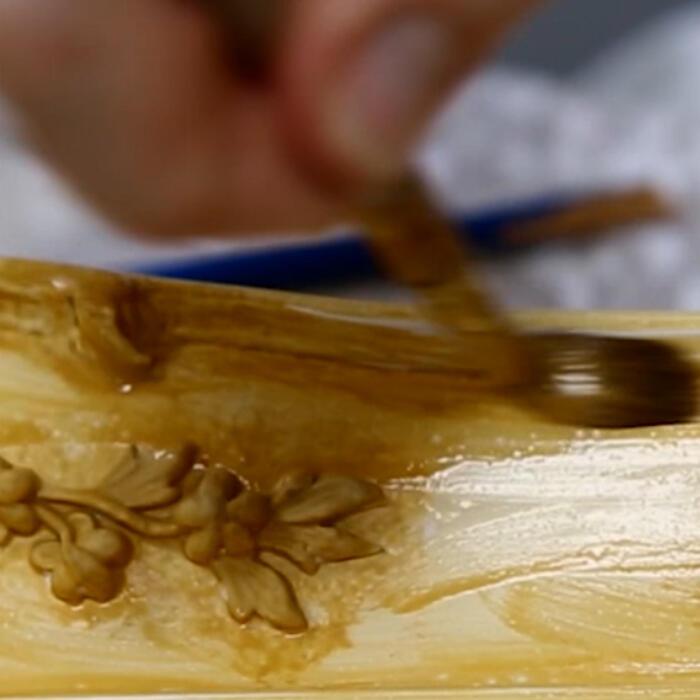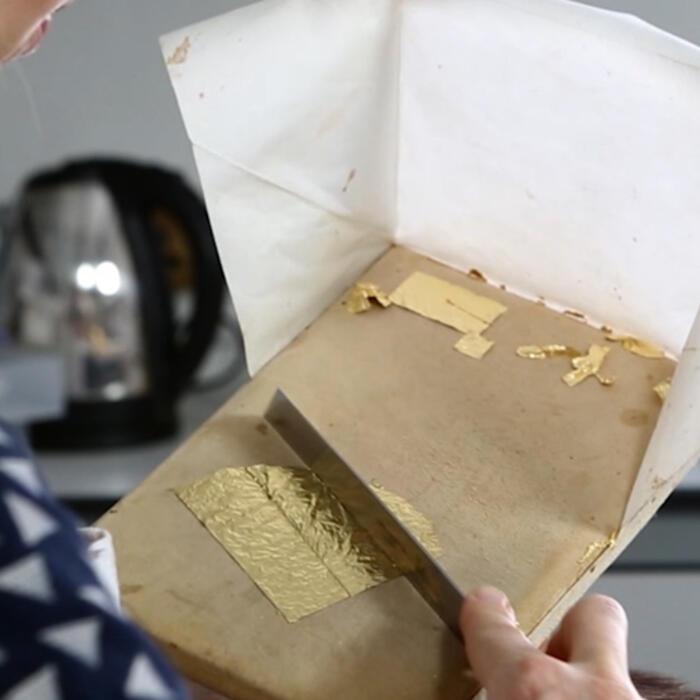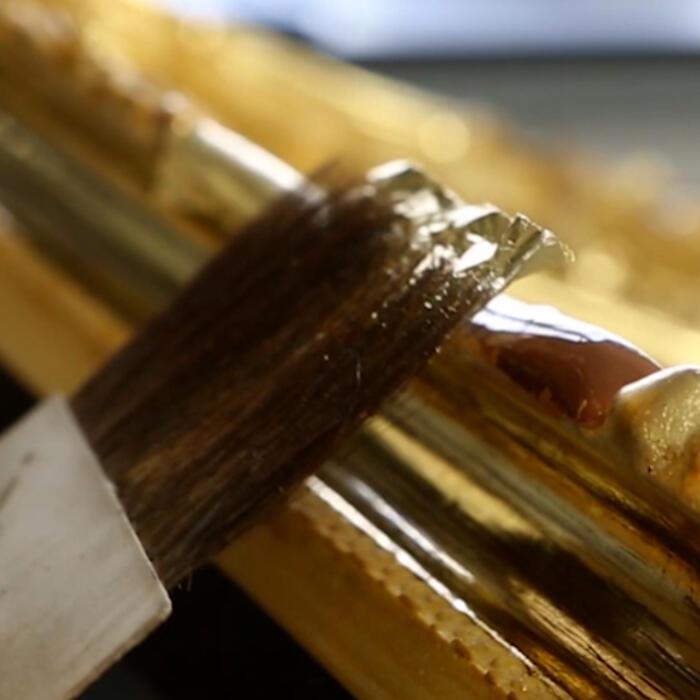As part of Opening up the Soane the Museum’s Conservation team managed the recreation of missing frames for several works, including a pair of sketches of the Coronation of King William IV (1831) by George Jones.
Beginning the project Back to top
The original frames are visible in a watercolour from Soane’s time but sometime between 1911 and 1925 the frames were replaced, and the original frames disposed of. Research by the Museum’s Deputy Director Helen Dorey unearthed two black and white photographs taken in 1911 that showed the original, ‘neo-rococo’ frames with their complex “composition” ornament. One showed the whole of one frame but was, sadly, not high resolution enough to see the decoration in detail. The other, fortunately, showed one corner of one frame in incredible detail: enough to allow the Soane to create a composite scale photograph of the decoration of the entire original frame.
Moulding the frames Back to top
To recreate the lost frames the Soane turned to Joseph McCarthy Mirror and Frame Makers in Tunbridge Wells, a specialist company which in 2005 inherited the Binnings Collection of over 3,000 unique reverse-carved boxwood moulds of the type used to create the decoration required.
As Joseph McCarthy explains, this was a project that enabled McCarthy’s to do what they love best – investigating and recreating original historic frames - and they were excited about the challenge of finding the corresponding moulds for all the intricate decorative elements.
Once they had identified the correct moulds then the process of casting the ornament in “composition” began. “Compo” is a putty-like mixture of chalk, resins, glue and linseed oil. Once prepared it is used to fill the blocks which are then pressed before the compo is taken out and applied to the timber picture frame. Once dry compo becomes rigid, providing a low-cost alternative to timber carving. The complex decoration of these frames meant using several different moulds to produce each section of ornament.
Gilding the frame Back to top
Once the compo was complete the frames returned to the Soane Museum for gilding. First, consultant specialist frame conservator Clare Kooy-Lister applies a layer of pigment and rabbit skin glue over the whole frame, which will enhance the richness of the gilding. Then some parts of the frame – those that will catch the light – are over-painted again with a second, different coloured solution. When this has dried the frame is ready for the application of the gold leaf, which is so thin and light that a special guard is used to prevent draughts blowing it away as it is delicately lifted with a brush and placed on the frame. Once applied the gold is gently pressed down with soft cotton wool to ensure it adheres properly. The new gold is so bright that it disguises the delicacy of the compo decoration and would overwhelm the artwork if left as it is. The solution is ‘toning’, which involves the application of a weak solution of rabbit-skin glue which is then carefully rubbed and distressed to bring out the shape of the compo decoration and give the gold a patina that enables the finished frame to harmonise with its older neighbours once re-hung in the North Drawing Room.
Preparing the drawings Back to top
While the frames were being recreated, the two sketches were removed from their modern card window-mounts and surface-cleaned by the Museum’s consultant Paper Conservator, Lorraine Bryant. She prepared pale blue mounts for them, replicating the subtle colour shown the 1830s watercolour by applying a matching watercolour wash border with a broad sable brush to a 100% cotton rag board. Several layers of blue wash were gradually applied to the dampened board to avoid tidemarks – it took several attempts to achieve two perfect mounts – before the drawings could finally be mounted and re-framed.
Today, this delightful pair of sketches hangs once again in the North Drawing Room to complete the authentic arrangement of pictures on the east wall as it was at the end of Soane’s life.
For more information about the work of Joseph McCarthy Mirrors and Frames visit www.josephmccarthy.co.uk
